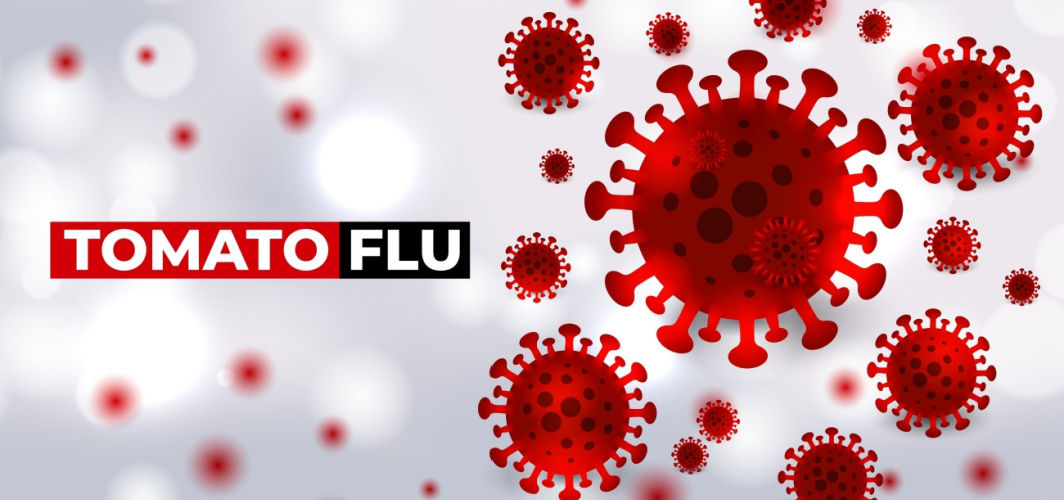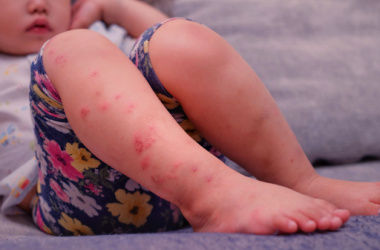General Health
Tomato Flu: What It Is And How To Stay Safe From It?
4 min read
By Apollo 24|7, Published on - 06 October 2022, Updated on - 18 October 2022
Share this article
0
62 likes

Have you heard about tomato flu? The new virus causing this condition has taken over the headlines in the last few months. What started as just a new variant of flu, first identified in Kerala’s Kollam District, has now turned into more than a hundred cases all across India. With the after-effects of the COVID-19 pandemic still being felt all around the globe, the emergence of a new virus is making people anxious.
Now that the quarantine restrictions have been lifted and the normal way of life has resumed once again, people have become sensitive to new endemic diseases like tomato flu. With the schools having been reopened, the risk of exposure to infections has increased for children. Read on to find out all about what tomato flu is and the precautions required to keep it at bay.
What is Tomato Flu?
Primarily seen in children between the ages of 1 and 9, Tomato Flu is a rare viral infection that gets its name from bright red blisters, which appear all over an infected person’s body and can grow to the size of tomatoes. It usually manifests in symptoms similar to those of COVID-19. According to a report published by Lancet Respiratory Medicine, Tomato Flu is a non-life-threatening infection in an endemic state (limited to a particular region). Though tomato flu is highly contagious, no casualties have been reported so far.
Causes of Tomato Flu
While several doctors, scientists, and researchers are investigating tomato flu, the cause of the disease is still unknown. Scientists have confirmed that the new virus is unrelated to SARS-CoV-2. One of the theories states that tomato flu can be an after-effect of dengue fever or chikungunya in children. It could also be a new variant of the hand, foot, and mouth disease (HFMD), which is a common infectious disease seen in children below 5 years of age and immunocompromised adults.

Symptoms of Tomato Flu
The initial symptoms seen in children infected with tomato flu are similar to those of chikungunya. These include:
- Skin rashes and irritation
- High fever
- Swollen and painful joints
- Painful red blisters (resembling those seen in monkeypox infection)
- Nausea and vomiting
- Fatigue
- Fever
- Dehydration
- Diarrhoea

Parents should consult a doctor immediately if they witness any of these symptoms in their child.
Diagnosis and Treatment of Tomato Flu
If anyone presents with the symptoms mentioned above, the doctor would recommend several serological and molecular tests to diagnose dengue, Zika virus, chikungunya, herpes, or varicella-zoster virus. Once all of these viral infections turn out to be negative, the possibility of the infection being tomato flu increases.
Since tomato flu is a self-limiting disease, its symptoms resolve within a few days. As of yet, no antiviral vaccine or drug is available to prevent or treat tomato flu. It is recommended to stay in isolation and take plenty of fluids and rest.
To relieve skin irritation and rashes, a hot water sponge is highly advisable. Moreover, symptomatic treatment could be required in the form of antipyretics for relieving body aches and fever, topical calamine lotion for blisters, topical mouth gels for oral ulcers, and anti-allergic medications for itching.
Tomato Flu: Precautions and Prevention
Since this infection is extremely contagious, it is essential to take certain precautionary steps to prevent it from spreading any further. Some of the preventive and precautionary measures you can take include:
- Consult with a doctor right away in case you observe the onset of symptoms.
- Maintain proper hygiene and keep surrounding necessities and environment properly sanitised.
- Make sure that an infected child does not share toys, food, clothes, or any other items with non-infected children.
- Those infected should be isolated for 5-7 days.

Though tomato flu is not fatal, it is highly contagious. Therefore, being aware of the symptoms and taking the necessary precautions can help control the transmission. Furthermore, once you witness any symptoms, consult a doctor for further investigation. Wish to get expert advice?
Medically reviewed by Dr Sonia Bhatt.
General Health
Leave Comment
Recommended for you

General Health
Food Allergy Vs Food Intolerance: What is the Difference?
There is difference between food allergy and food intolerance. Either of these conditions can cause headache, bloating, rashes, and stomach ache. Consult our doctors to learn about food intolerance vs food allergy.

General Health
How to Keep Ears Healthy and Prevent Infections
The common signs of ear infections include pain, itching and heaviness in the ear, hearing impairment along with dizziness, loss of appetite, and vertigo.

General Health
FAQs on Vitamin D, the Sunshine Vitamin
The skin contains the precursor of vitamin D, which gets activated on getting exposed to the ultraviolet (UV) rays of the sun.
Subscribe
Sign up for our free Health Library Daily Newsletter
Get doctor-approved health tips, news, and more.
Visual Stories

The Best Exercises for Controlling Blood Sugar Levels
Tap to continue exploring
Recommended for you

General Health
Food Allergy Vs Food Intolerance: What is the Difference?
There is difference between food allergy and food intolerance. Either of these conditions can cause headache, bloating, rashes, and stomach ache. Consult our doctors to learn about food intolerance vs food allergy.

General Health
How to Keep Ears Healthy and Prevent Infections
The common signs of ear infections include pain, itching and heaviness in the ear, hearing impairment along with dizziness, loss of appetite, and vertigo.

General Health
FAQs on Vitamin D, the Sunshine Vitamin
The skin contains the precursor of vitamin D, which gets activated on getting exposed to the ultraviolet (UV) rays of the sun.
